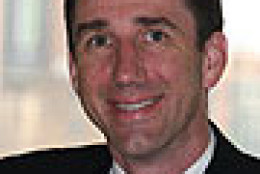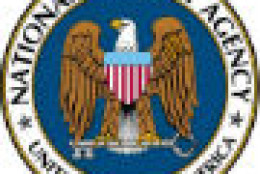STEM
-
The White House celebrates 50 federal innovators for their contributions to STEM fields. At an event with the Office of Personnel Management, they showed off five prototype programs that may one day help your agency recruit and retain new STEM talent. Tim McManus is Vice President for Education and Outreach at the Partnership for Public Service. He attended the event and shared details on how the White House plans to bring more STEM talent to your agency with Francis Rose on In Depth.
October 09, 2014 -
Lara Shane, vice president of Communications and Research at the Partnership for Public Service, joins Women of Washington radio show hosts Aileen Black and Gigi Schumm to discuss the importance of government in peoples' lives and her own call to government service.
September 17, 2014 -
On this week's Women of Washington radio show, Anne Altman, head of IBM Federal, joins hosts Gigi Schumm and Aileen Black to discuss how successful companies bring new talent into their organizations.
September 11, 2014 -
This fall, five more schools will offer an intensive science, technology, engineering and math (STEM) education track to students who are serious about federal cybersecurity careers. These Centers of Academic Excellence are overseen jointly by the National Security Agency and the Homeland Security Department. Schools have to pass a meticulous screening process to qualify for the program. Steve LaFountain is dean of the NSA's College of Cyber. He joined Tom Temin and Emily Kopp on the Federal Drive to discuss the new move.
July 31, 2014 -
Jill Singer, partner at Deep Water Point and former CIO of the National Reconnaissance Office, sits down with Women of Washington radio show hosts Aileen Black and Gigi Schumm, for a discussion about cloud computing and insider threats.
June 25, 2014 -
The government is in the biggest drive to promote STEM since the Sputnik era. STEM stands for science, technology, engineering and math. The country needs more students to become interested in these vital fields. Now the Education Department and NASA have teamed up in a novel approach attract students to STEM. Camsie McAdams is the deputy director of the STEM office at Education. She spoke with Tom and Emily on the Federal Drive.
June 03, 2014 -
The STEM leader profile clearly shows the STEM leader is unlikely to be effectively served by traditional leader development programs.
February 05, 2014 -
The Army Corps of Engineering is already having difficulty recruiting candidates for certain fields, and is convinced the problem will worsen unless STEM graduation rates increase.
August 14, 2013 -
The Obama administration's proposed fiscal 2014 budget called for consolidating or eliminating 116 of the government's 226 STEM initiatives and centralizing the coordination of STEM programs under just three agencies: the Education Department, the National Science Foundation and the Smithsonian Institution. The administration's STEM proposal is one of the government's first visible steps in reversing some of the duplication that riddles the federal landscape and which some lawmakers have seized on as examples of government waste.
May 17, 2013 -
Paul Strasser of Dynamics Research Corporation talks about a new deal his company has with FDA. Marilee Fitzgerald, director of the Department of Defense Education Activity, discusses promoting STEM fields. Tim Scannell of Technology Guide reports from the Consumer Electronics Show in Las Vegas.
January 10, 2013 -
Better leveraging technology in a handful of key areas could help solve pressing national challenges, improve the quality of government services and reduce the federal deficit by more than $200 billion. That's the main takeaway from a collection of reports that make up the 2012 Quadrennial Government Technology Review, commissioned by the American Council for Technology-Industry Adivsory Council's Institute for Innovation. Anne Reed and Molly O'Neill, the two co-chairs of the institute's steering committee, and Wendy Henry, a member of the steering committee, joined In Depth with Francis Rose to discuss the reports' findings.
November 14, 2012 -
Sean Patton of Lockheed Martin talks about the EPA's migration to a collaboration and communication service. Sanjay Koyani discusses a partnership with the Centers for Disease Control and Prevention and other Health and Human Services components to get better leverage out of the information it has. Engineer Norman R. Augustin talks about a new report on STEM prepared by the National Academy of Engineering and the National Research Council.
November 01, 2012 -
The 18-month study found DoD is no longer the employer of choice for STEM workers, at a time it should be attracting a "high fraction of the highest-quality STEM workforce."
October 31, 2012 -
On the In Depth show blog, you can listen to the interviews, find more information about the guests on the show each day and links to additional resources.
August 17, 2012 -
The Office of Personnel Management wants agencies to use workplace flexibility to encourage federal workers to pursue activities in science, technology, engineering, and mathematics — or STEM.
August 15, 2012





